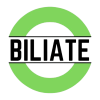Instagram has transformed from a photo-sharing app to a dynamic platform that combines social interaction with powerful monetization opportunities.
With the rise of Instagram Shopping, Stories, and Reels, creators and brands now have multiple ways to generate revenue.
But how do you effectively balance these features to maximize your earnings?
Instagram’s shopping features can drive direct sales, while Stories and Reels ads provide a steady stream of ad revenue.
Balancing these revenue streams is essential for long-term growth and profitability, and this article will show you how to do just that.
Whether you’re a creator, small business owner, or brand looking to scale, integrating these monetization strategies effectively can be a game changer.
Let’s dive into how you can harmonize these opportunities and maximize your earning potential!

1. Understanding Instagram’s Shopping Features
Instagram Shopping offers creators and brands an easy way to turn their profiles into storefronts. With features like product tags, Instagram Checkout, and Shops, you can showcase your products directly to your followers without them ever leaving the app.
- Product Tags: These allow users to purchase products directly from your feed, Stories, or Reels by tapping on tagged items. This feature increases the visibility of your products and makes it easier for your audience to engage with them.
- Instagram Shops: This is a dedicated section where followers can browse your products, see new arrivals, and explore collections. The seamless integration of this feature into the app enhances the shopping experience.
Pro Tip: Use Instagram Shops to feature seasonal products or promotions to drive urgency and increase sales.
2. Maximizing Revenue from Stories Ads
Instagram Stories, with their interactive nature and limited-time format, offer an excellent opportunity to monetize through ads. Stories appear at the top of the app, making them more prominent and accessible to users.
- Swipe-Up Links: If you have over 10,000 followers, you can add a swipe-up link in your Stories. Use this to direct viewers to your shop or a specific product page.
- Interactive Elements: Polls, quizzes, and countdowns within Stories increase user interaction, leading to better ad performance. Instagram rewards highly engaging content by showing it to more users.
User Tip: Post a mix of organic and sponsored Stories. This helps balance brand engagement and ad revenue without overwhelming your audience.
3. Capitalizing on Reels Ad Revenue
Instagram Reels is the platform’s answer to TikTok, and it’s rapidly becoming one of the best ways to earn ad revenue. Reels have massive discoverability potential because they are shown in the Explore tab, and users can easily scroll through dozens of videos at a time.
- In-Stream Ads: Instagram runs ads between Reels, and creators get paid based on their content’s performance, similar to how YouTube ads work. The more engaging your content, the higher the revenue.
- Collaborations and Partnerships: Brands are increasingly partnering with creators for Reels ads because of their viral potential. Sponsored Reels that feel organic tend to perform better than traditional advertisements.
Interactive Prompt: Try creating a branded challenge or trend on Reels. Use the same content to test which drives more revenue—organic reach or paid promotions.
4. Balancing Shopping Features with Ad Content
To effectively balance Instagram’s shopping features with ad revenue from Stories and Reels, it’s important to map out a strategic content calendar. You want to ensure that you’re not overwhelming your audience with too much promotional content while still maximizing your earning opportunities.
- Content Mix: Alternate between product-focused posts, engaging Reels, and interactive Stories. Mixing these formats ensures that your content remains fresh and avoids appearing overly commercialized.
- Cross-Promotion: If you’re running an ad for a product in your Stories, follow up with a Reel showcasing how the product is used. You can then tag the product in both the Story and Reel, creating a seamless shopping experience while maximizing visibility.
User Tip: Use Instagram Insights to track the performance of both shopping features and ads. This will help you identify the content that resonates most with your audience and fine-tune your strategy.

5. Integrating Instagram Ads with Shopping Features
Combining Instagram’s shopping features with paid ad strategies can lead to greater overall revenue. Ads in Stories or Reels can serve as a gateway to your Instagram Shop, increasing conversions and driving more sales.
- Call-to-Action (CTA): In your Reels or Stories, always include a CTA that encourages viewers to visit your shop or check out your latest product drop. The clearer and more direct your CTA, the better.
- Product Demonstrations in Ads: Use Stories and Reels ads to demonstrate how your products work. Showcasing the product in action increases credibility and inspires your audience to make a purchase.
Interactive Task: Try running a week-long campaign where you focus on a specific product. Track how well it performs in both Reels and Stories, and tweak your future campaigns based on the results.
6. Leveraging Data to Optimize Revenue
Balancing Instagram’s various monetization tools is a constant process of analyzing and adjusting your approach. Use Instagram’s built-in analytics tools to measure the effectiveness of both your ad and shopping strategies.
- Instagram Insights: This tool provides data on how your posts, Stories, and Reels are performing. Pay attention to key metrics like reach, impressions, and engagement rates.
- Ad Manager: Instagram’s Ad Manager helps track the performance of paid promotions. It allows you to optimize your ad spend and find which ads generate the most revenue.
User Tip: If your Stories ads consistently perform better than Reels, consider directing more resources toward Stories while using Reels for organic reach.

Conclusion
Successfully balancing Instagram’s shopping features with ad revenue from Stories and Reels is key to maximizing your income on the platform.
By understanding how each feature works, leveraging data, and implementing strategic content mixing, you can find the perfect equilibrium between direct sales and ad revenue.
Don’t be afraid to experiment with different formats, CTAs, and product-focused content to see what works best for your brand.
Are you ready to elevate your Instagram monetization strategy? Start balancing these features today and watch your revenue grow!

Pingback: X Introduces Engagement-Based Earnings For Creators Is It A New Revolution? - 2025 » Outdoor Adventure